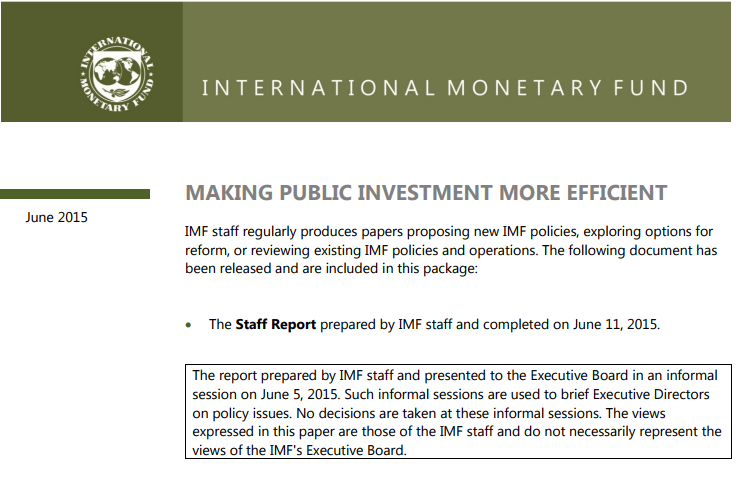Publications
Filter by
417 results found
The paper “Partnering to Build a Better World: MDBs’ Common Approaches to Supporting Infrastructure Development” presents a brief description of how MDBs work with their Borrowing Member Countries (BMCs) .

This report describes the role of economic analysis and the impacts of climate change on economic analysis of infrastructure projects in the context of Asia and the Pacific.

This note seeks to identify a research agenda for addressing the main gaps in information for understanding the drivers and impediments of long-term investment and related financing.

The study provides a qualitative and quantitative analysis of the employment impact EIB projects in four Mediterranean partner countries.


This paper finds that better Public Investment Management enhances public infrastructure quality and economic growth, and pinpoints key institutional reforms needs to boost public investment efficiency and productivity.


This publication outlines options for the financing and implementation of a systematic infrastructure action plan for the Seychelles.

The Decision Tree Framework is a robust decision scaling approach from the World Bank that provides resource-limited project planners and program managers with a cost-effective and effort-efficient, scientifically defensible, repeatable, and clear method for demonstrating the robustness of a project to climate change.

This guide outlines five steps in the context of achieving a knowledge exchange, (i) Anchor the knowledge exchange, (ii) Define the knowledge exchange, (iii) Design and develop the knowledge exchange, (iv) Implement the knowledge exchange, (v) report the results. Case studies from South America and Africa are discussed with reference to this guide. This is the second edition of the document updated in 2015.

This guide outlines five steps in the context of achieving a knowledge exchange, (i) Anchor the knowledge exchange, (ii) Define the knowledge exchange, (iii) Design and develop the knowledge exchange, (iv) Implement the knowledge exchange, (v) report the results. Case studies from South America and Africa are discussed with reference to this guide. This is the second edition of the document updated in 2015.

The use of public-private partnerships to design, build and deliver infrastructure worldwide has grown significantly in the past decade.

The Public-Private Partnership Legal Resource Center (PPPLRC) provides sample legal materials which can assist in the planning, design and legal structuring of any infrastructure project.

The Project Readiness Assessment (PRA) is a standardized tool managed and financed by the Global Infrastructure Facility (GIF).

This report discusses findings from four case studies of the pre-investment stage in infrastructure projects in Latin America and the Caribbean.

The purpose of the Guidelines is to establish the types of socioeconomic evaluations that will be applicable to the investment programs and projects considered by the dependencies and entities of the Federal Public Administration.

The purpose of the Guideline is to establish the types of socioeconomic evaluations that are applicable to the mass urban transport investment projects.




The report provides policy and regulatory options for increasing effective use of existing fixed and mobile infrastructure as well as alternative infrastructure networks such as power grids and railroads.

This publication illustartes the EIB's framework for assessing, managing and monitoring environmental and social impacts and risks associated with its operations.

The 3PA consists of three pillars each of which represents a key dimension of quality project assessment providing a clear framework within which project proposals can be evaluated.

This report analyses the school design requirements in force in LAC countries.


 View PPP Risk Allocation Tool website
View PPP Risk Allocation Tool website

